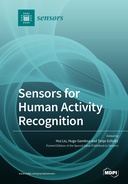Explore

Sensors for Human Activity Recognition
0 Ungluers have
Faved this Work
Login to Fave
Human activity recognition (HAR) and human behavior recognition (HBR) play increasingly important roles in the digital age. High-quality sensory observations applicable to recognizing users’ activities and behaviors, including electrical, magnetic, mechanical (kinetic), optical, acoustic, thermal, and chemical biosignals, are inseparable from sensors’ sophisticated design and appropriate application. Traditional sensors suitable for HAR and HBR, including external sensors for smart homes, optical sensors such as cameras for capturing video signals, and bioelectrical, biomagnetic, and biomechanical sensors for wearable applications, have been studied and verified adequately. They continue to be researched in depth for more effective and efficient usage, and brand-new areas facilitated by sensor-based HAR/HBR are emerging, such as interactive edutainment, single-motion duration analysis, time series information retrieval, handcrafted and high-level feature design, and fall detection. Meanwhile, innovative sensor research for HAR or HBR is also very active in the academic community, including new sensors appropriate for HAR/HBR, new designs and applications of the above-mentioned traditional sensors, and the usage of non-traditional HAR-/HBR-related sensor types, among others.
This book is included in DOAB.
Why read this book? Have your say.
You must be logged in to comment.
Rights Information
Are you the author or publisher of this work? If so, you can claim it as yours by registering as an Unglue.it rights holder.Downloads
This work has been downloaded 245 times via unglue.it ebook links.
- 245 - pdf (CC BY) at Unglue.it.
Keywords
- accelerometer
- adversarial learning
- ankle–foot orthoses
- behavior reconstruction
- camera calibration
- customer behavior recognition
- deep complex network
- deep learning
- digital image correlation
- domain generalization
- electrocardiogram
- Energy consumption
- explainable methods
- functional electrical stimulation
- gated recurrent unit
- GPS
- HAR
- Heart rate variability
- human activity recognition
- human in the loop
- in-store camera
- indoor localization
- leave-one-subject-out cross-validation
- Machine learning
- Medical equipment & techniques
- medicine
- Medicine: General Issues
- multi-location
- n/a
- pedestrian dead reckoning
- point-to-point camera distortion calibration
- Psychological Stress
- semi-supervised learning
- sensing technique
- Shapley additive explanations
- Smart Home
- smart retail
- speckle pattern
- syn-LSTM
- validation methodology
- vision-based human activity recognition
- VR high-altitude experiment
- wearable devices
- Wi-Fi sensing
Links
DOI: 10.3390/books978-3-0365-7555-1Editions

